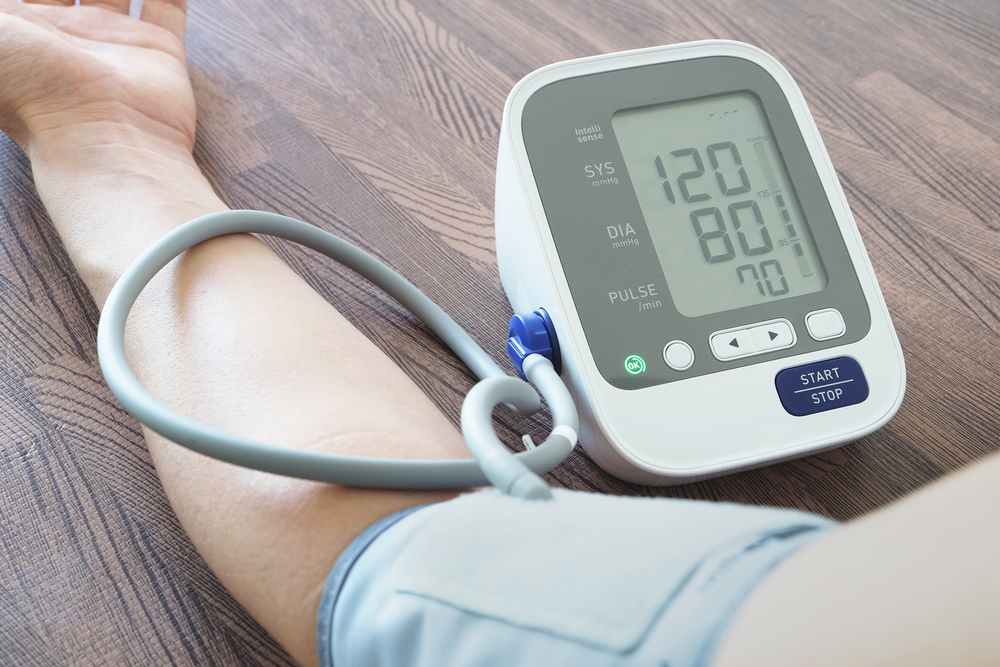Do not let High Blood Pressure Pressurize You

High Blood Pressure is one of the most common conditions trending high on charts of cardiovascular conditions. This condition, also called hypertension, affects our arteries. A person with hypertension has blood pushing against the artery walls with high pressure constantly. Thus the heart has to put extra effort into pumping the blood.
A person with hypertension has a blood pressure of more than 130/80 mm Hg. According to American Heart Association, blood pressure can be of the following types:
- Normal blood pressure: Blood pressure within the range of 120/80 mm Hg.
- High blood pressure: It can be of 3 types:
- Stage 1 hypertension: The upper value is from130 to 139 mm Hg, and the lower is between 80 and 89 mm Hg.
- Stage 2 hypertension: The upper number is 140 mm Hg or higher, while the bottom is 90 mm Hg or higher.
- Hypertensive emergency: A blood pressure of more than 180/120 mm Hg is a hypertensive emergency or crisis. For a hypertensive emergency, one should immediately seek medical help.
Poorly managed high blood pressure can increase the risk of stroke, heart attack, and other health conditions.
What are the common symptoms of high blood pressure?
Many people with hypertension do not show any symptoms, even at a very high level. A person with blood pressure can live a normal life without any symptoms. You can have high blood pressure for years without any symptoms.
Some people may exhibit the following symptoms:
- Headaches
- Nosebleeds
- Shortness of breath
Can I control hypertension without medicines?
People with hypertension always wonder if medication is the only way to normalize blood pressure. But lifestyle factors play an equally important role in managing blood pressure. A healthy lifestyle may delay, prevent, or reduce the need for medication.
These ten lifestyle changes can lower and manage healthy blood pressure levels:
Watch your waistline and be careful of every inch you gain:
Blood pressure often increases with weight. Often an obese person feels disrupted breathing during sleep, causing a rise in blood pressure.
Managing a healthy weight is one of the essential steps in controlling blood pressure. For an obese, even a little weight loss can bring a significant difference. The blood pressure may reduce by one mm of Hg with each kilogram. Along with weight loss, managing the size of your waistline is also essential.
You may be susceptible to high blood pressure if you have too much fat around your waistline.
Men are at risk if their waist is more than 40 inches (102 centimeters) and women are at risk if their waist is greater than 35 inches (89 centimeters). But these numbers may vary based on your body structure.
Exercise regularly:
A healthy lifestyle can reduce blood pressure by 5 to 8 mm Hg. Regular exercise can prevent blood pressure from rising again if you have a history of high blood pressure. One should aim for at least 30 minutes of moderate-intensity physical activity five days a week.
Exercise can also prevent the transition of elevated blood pressure into high blood pressure (hypertension). Regular physical activity can bring down blood pressure in people with a history of hypertension.
Some examples of aerobic exercise are brisk walking, cycling, jogging, dancing, and swimming. One can also adopt high-intensity interval or strength training of at least 75 minutes a week.
Switch to a healthy diet regimen:
A diet rich in fruits, whole grains, vegetables, low-fat dairy products, and other items with low saturated fat and cholesterol can reduce high blood pressure by up to 11 mm of Hg. Eating plans such as the Mediterranean and Dietary Approaches to Stop Hypertension (DASH) diet can help control blood pressure.
A Potassium-rich diet can reduce the salt (sodium) effect on blood pressure. Some of the best potassium sources are fruits and vegetables. A 3,500 to 5,000 mg daily potassium can help lower blood pressure by 4 to 5 mm Hg.
Reduce salt (sodium) intake in your diet:
A little reduction in dietary sodium can improve heart health and decrease blood pressure by 5 to 6 mm Hg.
The effect of sodium intake on blood pressure varies among different groups of people. A daily sodium intake of approximately 1,500 mg is beneficial for most adults. But the question is how to reduce sodium consumption.
Some simple steps will help you manage this problem. Read food labels and look for low-sodium foods and beverages. Limit the consumption of processed foods that contain added sodium.
Limit alcohol consumption:
Alcohol consumption of more than one drink (1.5 ounces of 80-proof liquor, 12 ounces of beer, or 5 ounces of wine) a day for women and two drinks for men may increase your blood pressure by several points and reduce the effectiveness of anti-hypertensive medications.
Stick to the principle of no smoking:
Quitting smoking reduces blood pressure and the risk of heart disease. Smoking cessation can also improve overall health and prevents other medical conditions like lung cancer.
Manage your sleep schedule:
Chronic sleep deprivation (sleeping less than six hours) can increase your risk of hypertension. Various causes can cause sleep problems, but with the following some simple lifestyle changes, you can get more restful sleep and reduce high blood pressure levels:
- Try to maintain a sleeping schedule by going to bed at the same time each day.
- Create a peaceful ambiance for sleep, such as dark curtains, comfortable bedding and comforter, a quiet room, and switching off all screens.
- Shorten your day-time nap to 30 minutes
- Avoid large meals, coffee, alcohol, and nicotine consumption just before sleeping.
Lower stress levels:
Long-term stress can trigger high blood pressure conditions in many. Practice some de-stressing techniques, such as meditation, and yoga, focus on one work at a time, listen to music or podcasts when you are stuck in traffic, avoid negative people, and make time for your hobbies.
Regular blood pressure monitoring:
Keeping a tab on your blood pressure levels and managing them with medication and lifestyle changes are crucial for better health. You can monitor your blood pressure at home with a monitoring device or at a nearby clinic with the help of a healthcare provider. Blood pressure monitoring devices are available at every drug store, and you can get them without a prescription.
Motivation from your partner or family members:
You can ask your spouse, friends, and family members to encourage and motivate you to follow an appropriate diet and exercise regimen.
When to consult a healthcare provider
You should consult a doctor for a regular blood pressure screening. They can recommend:
- At least once every two years for blood pressure measurement from age 18 onwards.
- If you are 18-39 with a higher risk of high blood pressure, a doctor may recommend blood pressure monitoring once a year.
- If you are age 40 or above with blood pressure variations, a doctor may recommend once a month or frequent monitoring depending on your health and symptoms.
- Your doctor may recommend frequent readings if you have other chronic conditions, such as cardiovascular diseases or diabetes.
Conclusion
Blood pressure fluctuation is a common cardiovascular complaint. But if not treated on time, it can compromise health and causes severe medical conditions, such as heart disease and cerebral stroke. Therefore, regular blood pressure monitoring is crucial for general health care.






